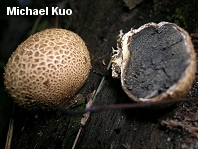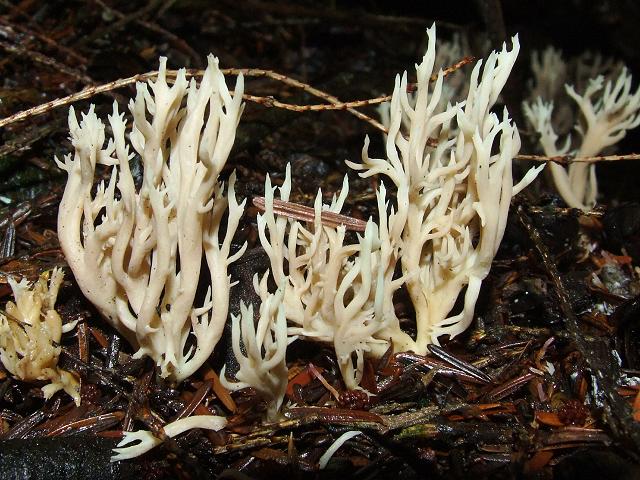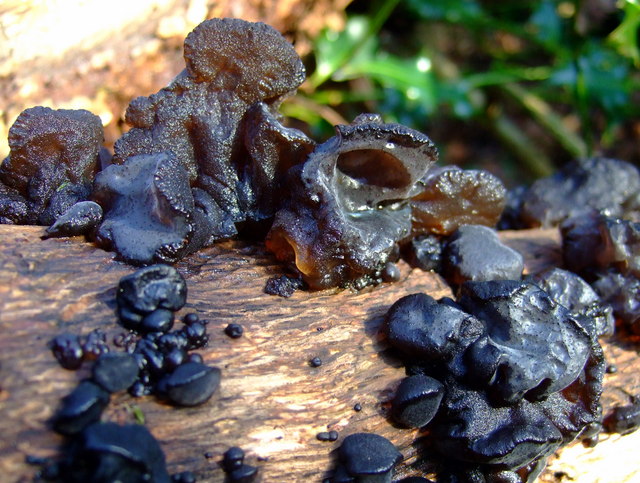 |
| Figure 1: Scleroderma aurantium showing inside containing dark coloured spores. |
 |
| Figure 1: Scleroderma aurantium |
Name: Scleroderma aurantium
Common Name: Common Earthball or Pigskin poison puffball
Common Name: Common Earthball or Pigskin poison puffball
Family: Lycoperdales
Collection Date: 13th Sept. 2011
Habitat: Found underneath trees amoungst some rotting wood.
Location: South Chagrin Reservation
Description: About 1-1.5 inches tall. Friuting body tan- brown in colour with wart-like protrusions. Flesh very firm and hard to tear. Spores dark brown.
Collector: Olivia Benjamin
Key used: Orson K. Miller Jr. 1977. Mushrooms of North America. E.P. Dutton New York.
Keying Steps:
Keying Steps:
Introduction Key pg. 299
1a. Young puffball cut in half shows firm purple to purple brown fleshy spore mass (gleba) and often thick outer skin...2
2a. Fruiting body small, 3-6cm broad; outer skin into lobes but never curving back like an earthstar...3
3a. Outer skin covered with warts ---> 351. Scleroderma aurantium.
Ecology: This fungus is mycorrihzal with conifers and hardwoods. They are widely distributed and can be found alone or in clusters (Kuo, 2004).
Links
Kuo, M. (2004, December). Scleroderma citrinum. Retrieved from the MushroomExpert.Com Web site: http://www.mushroomexpert.com/scleroderma_citrinum.html
http://www.mushroomexpert.com/scleroderma_citrinum.html
http://en.wikipedia.org/wiki/Scleroderma_citrinum
1a. Young puffball cut in half shows firm purple to purple brown fleshy spore mass (gleba) and often thick outer skin...2
2a. Fruiting body small, 3-6cm broad; outer skin into lobes but never curving back like an earthstar...3
3a. Outer skin covered with warts ---> 351. Scleroderma aurantium.
Ecology: This fungus is mycorrihzal with conifers and hardwoods. They are widely distributed and can be found alone or in clusters (Kuo, 2004).
Links
Kuo, M. (2004, December). Scleroderma citrinum. Retrieved from the MushroomExpert.Com Web site: http://www.mushroomexpert.com/scleroderma_citrinum.html
http://www.mushroomexpert.com/scleroderma_citrinum.html
http://en.wikipedia.org/wiki/Scleroderma_citrinum










